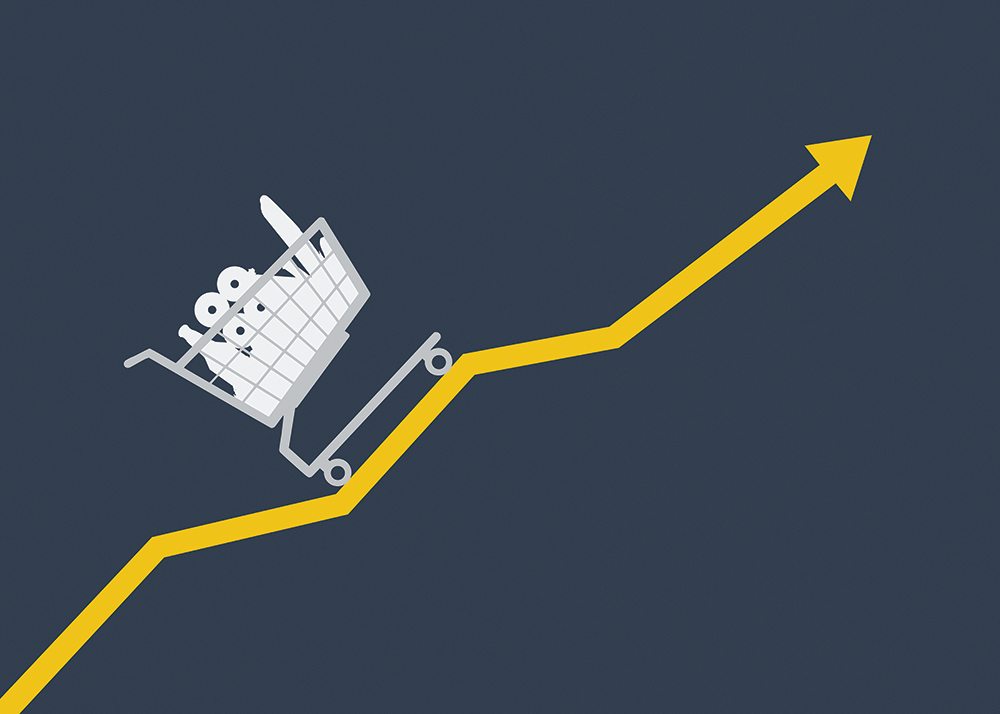
Fuel prices have soared in the international market along with the Russia-Ukraine war that started on February 24 last year. However, there have been downward fluctuations after a year of the conflict, yet Nepal Oil Corporation (NOC) – the state-owned fuel supplier – has been keeping fuel prices consistently at an elevated level.
Nepal Oil Corporation has been accused of its reluctance in adjusting the prices when international market prices go down and being assertive of elevating prices when the international market prices witness an increment. In May last year, the corporation increased the price of liquefied petroleum gas (LPG), which is commonly known as cooking gas, by Rs 200 per cylinder and prices of other fuels were also adjusted frequently when the international market prices were soaring.
Whenever the price of fuel is on the higher side, it adversely starts affecting the price of other commodities due to higher transportation costs. “If you look at the market at present you will notice that the price of practically every commodity has risen,” said Somlal Baiju, who owns a small shoe outlet including a manufacturing unit in Maitidevi, Kathmandu. “Over the last few months, it has become challenging for low-income people like us to sustain and even ensure education for our children,” he says.
The current market situation is quite interesting because Nepal Rastra Bank – the central regulatory and monetary institution – states that inflation in the first seven months of this fiscal is just 8%, however, people find the market situation totally different as the prices of all commodities have increased.
“One does not have to be an economist to gauge the inflation rate at the moment. Just compare the prices of rice, wheat flour and edible oil in the last one year,” said Sharmila Nakarmi, a consumer purchasing daily essentials at New Baneshwor. “The price of commodities and services has skyrocketed whereas income has remained stagnant,” she complains.
It has become a trying time for the poor and low-income people as commodity prices soared after the Covid 19 pandemic and further spiked with the Russia-Ukraine war, import restrictions, increase in customs duty of rice and export ban on wheat imposed by the Indian government, and to top it all the profit-making attitude of traders, according to Santosh Gartaula, an economist and Co-founder of Bikas Udhyami. “We are facing a situation of hyperinflation,” he states.
(Source: Nepal Oil Corporation)
(*First seven months of fiscal year 2022-23, Nepal Rastra Bank)
| Date | Petrol (Rs per litre) | Diesel (Rs per litre) | LPG (Rs per cylinder) |
ATF (domestic (Rs per litre) |
| July 16, 2021 | 128 | 111 | 1,425 | 84 |
| August 23, 2021 | 130 | 113 | 1,450 | 86 |
| October 29, 2021 | 133 | 116 | 1,500 | 96 |
| November 10, 2021 | 136 | 119 | 1,575 | 101 |
| January 19, 2022 | 139 | 122 | 1,575 | 106 |
| February 1, 2022 | 142 | 125 | 1,575 | 116 |
| February 19, 2022 | 145 | 128 | 1,575 | 116 |
| February 20, 2022 | 145 | 128 | 1,575 | 126 |
| March 3, 2022 | 150 | 133 | 1,575 | 136 |
| March 16, 2022 | 155 | 138 | 1,575 | 151 |
| April 5, 2022 | 160 | 143 | 1,600 | 156 |
| May 14, 2022 | 170 | 153 | 1,600 | 156 |
| May 22, 2022 | 180 | 163 | 1,800 | 166 |
| June 3, 2022 | 170 | 153 | 1,800 | 166 |
| June 10, 2022 | 178 | 165 | 1,800 | 166 |
| June 20, 2022 | 199 | 192 | 1,800 | 185 |
| June 25, 2022 | 179 | 163 | 1,800 | 185 |
| July 4, 2022 | 181 | 172 | 1,800 | 190 |
| September 1, 2022 | 181 | 178 | 1,800 | 190 |
| December 16, 2022 | 178 | 175 | 1,800 | 190 |
| January 8, 2023 | 175 | 172 | 1,800 | 170 |
| February 6, 2023 | 178 | 175 | 1,800 | 170 |
Costly imports and restrictions
Due to insufficient production, Nepal is basically an import-based economy. The country is reliant on imports of food, beans and lentils, edible oil, and other daily essentials and there are times when global situations affect the Nepali market. For instance, Nepal used to import sunflower oil from Ukraine but now the price of edible oil has surged exponentially as supply has been disrupted due to the Russia-Ukraine conflict. On the other hand, Ukraine is one of the major producers of wheat and that used to stabilise global food prices. An increasing number of refugees and lack of production of agriculture commodities in Russia and Ukraine have tempted food-exporting countries to think about their own food security considering the rising demand of food commodities in the aftermath of the slowdown in production. It is reported that the production of food has slumped in major producing countries – India and China. India, the second biggest producer of wheat has signalled that it will likely extend the export ban of wheat which is supposed to be reviewed in April this year. A jump in exports following the Russia-Ukraine war caused domestic price rise in India which impelled it to take the decision to ban the export of wheat in May last year. What compounded the problem in India was a slump in production due to the rise in temperature levels. Thus, climatic factors and the escalation in exports caused a price rise in India. The Indian government has cited the ban on wheat is to tame the food inflation in their country which is still on the higher side. In this scenario, India has signalled an extension of ban on export till next year. Nepal is also an importer of wheat from India. Nepali flour mills and consumers have thus been adversely affected following the inadequate supply from India. Subsequently, India has also raised the export tariff on rice by 20% since September last year. As a result, the price of rice has increased in the Nepali market. According to the Department of Customs, Nepal imported rice worth Rs 47.35 billion in the last fiscal year. In the first seven months (August 2022 to February 2023) of the ongoing fiscal, Nepal has already imported rice worth Rs 23.46 billion.|
Fiscal Year |
Inflation |
| 2010-11 | 9.6% |
| 2011-12 | 8.3% |
| 2012-13 | 9.9% |
| 2013-14 | 9.1% |
| 2014-15 | 7.2% |
| 2015-16 | 9.9% |
| 2016-17 | 4.5% |
| 2017-18 | 4.2% |
| 2018-19 | 4.6% |
| 2019-20 | 6.1% |
| 2020-21 | 3.6% |
| 2021-22 | 6.32% |
| 2022-23* | 8% |
Food security: A critical challenge ahead
Rising food inflation has affected the low-income group as they are cutting down on their diet to make adjustments. Nepal could face a burning challenge of food insecurity as the government has barely recognised it as a growing menace. While citing the example of the government of India, they are doing a lot to tame inflation to safeguard their people from the spike in food prices. “The decision by the Indian government to restrict the export of wheat and raise export duty on rice are some initiatives to stabilise food prices at a moderate level,” said Nara Bahadur Thapa, former Executive Director of Nepal Rastra Bank. “Apart from this, the government of India has cut down the excise duty levied on fuel to extend relief to consumers directly and also through indirect means as a drop in prices of fuel subsequently brings transportation cost down which has a connection to the price of nearly all commodities,” he added. However, the government of Nepal has been keeping fuel prices high and fuelling inflation. The government didn’t even roll back the Rs 10 customs duty levied on each litre of petrol and diesel when international market prices went down rampantly during Covid 19. Nepal has done nothing to improve the production of food and vegetables though the fiscal budget of 2022-23 has envisioned to be self-reliant in most agriculture and meat and dairy products. Nepal’s over-reliance on imports may not change in the near future. Considering the recent developments in food exporting countries, Nepal could face a critical challenge to feed its people due to soaring food prices in the international market, rise in export duty, and other restrictive measures. Food security and energy security are considered as issues of strategic importance to safeguard the country’s sovereignty. Destruction of a self-reliant rural economy and overreliance on imported goods might impact the larger segment of the people and could even pose a challenge of social unrest. READ ALSO:
Published Date: April 3, 2023, 12:00 am
Post Comment
E-Magazine
RELATED Feature


-1765706286.jpg)
-1765699753.jpg)

